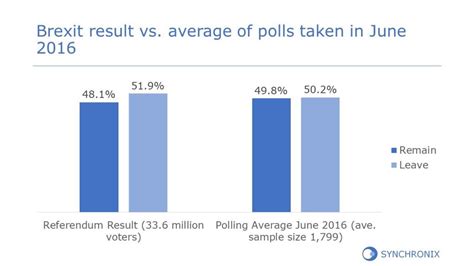How to Get More Accurate Polling Results: A Guide to Reducing Bias and Increasing Reliability
Polling, while a cornerstone of understanding public opinion, is far from a perfect science. Inaccurate polls can misrepresent public sentiment, leading to flawed policy decisions and a general erosion of trust. This guide will explore key strategies to improve polling accuracy, focusing on reducing bias and enhancing reliability.
Understanding the Sources of Inaccuracy
Before diving into solutions, let's pinpoint the common culprits behind inaccurate polling results:
1. Sampling Bias:
This is arguably the biggest challenge. A biased sample doesn't accurately reflect the population it's supposed to represent. For instance, relying solely on landline phones excludes significant portions of the population, particularly younger demographics.
2. Question Wording:
The way a question is phrased can significantly influence responses. Leading questions, loaded language, or even the order of questions can skew results. Neutral and unbiased wording is crucial.
3. Non-response Bias:
Not everyone who's contacted participates in a poll. Those who refuse to participate might hold different opinions than those who do, creating a bias. Understanding why people don't respond is key to mitigating this issue.
4. Interviewer Bias:
The interviewer's tone, demeanor, and even subconscious cues can unintentionally influence respondents' answers. Training interviewers rigorously on neutral interviewing techniques is essential.
5. Social Desirability Bias:
Respondents may provide answers they believe are socially acceptable, rather than their honest opinions, especially on sensitive topics. This can be minimized through careful question design and ensuring anonymity.
Strategies for More Accurate Polling
Here's how to address the challenges mentioned above:
1. Improve Sampling Techniques:
- Multi-modal sampling: Combine landline, cellphone, and online surveys to capture a broader representation of the population.
- Random sampling: Employ methods like random digit dialing (RDD) to ensure every member of the population has an equal chance of being selected.
- Stratified sampling: Divide the population into relevant subgroups (age, location, etc.) and sample proportionally from each group. This ensures representation across different demographics.
- Weighting: Adjust the data to account for over or under-representation of specific groups in the sample.
2. Craft Impartial Questions:
- Use clear and concise language: Avoid jargon or complex terminology.
- Avoid leading questions: Frame questions neutrally without suggesting a preferred answer.
- Test your questions: Conduct pilot studies to identify any potential biases in question wording before deploying the full survey.
3. Maximize Response Rates:
- Incentivize participation: Offer small rewards or incentives to encourage participation.
- Multiple contact attempts: Follow up with non-respondents to increase participation.
- Shorter surveys: Keep surveys concise to reduce respondent fatigue.
4. Train Interviewers Effectively:
- Provide comprehensive training: Equip interviewers with the skills to conduct neutral and unbiased interviews.
- Monitor interviewer performance: Regularly review recordings of interviews to identify and address potential biases.
5. Minimize Social Desirability Bias:
- Guarantee anonymity: Assure respondents their responses will remain confidential.
- Use randomized response techniques: Employ methods that allow respondents to answer truthfully without revealing their personal opinions directly.
Conclusion: Striving for Accuracy
Getting more accurate polling results requires a multi-faceted approach. By addressing sampling bias, question wording, non-response bias, interviewer bias, and social desirability bias, pollsters can significantly improve the reliability and validity of their findings. The pursuit of accuracy is an ongoing process, requiring constant refinement and adaptation to evolving societal dynamics. Implementing the strategies outlined above is crucial for building public trust and ensuring polls serve their intended purpose – accurately reflecting public opinion.
